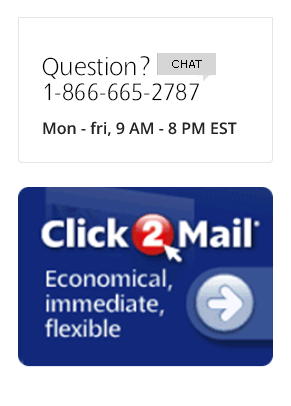Just when you thought all the marketing action was in the digital arena, customers are demonstrating that direct mail is still effective. In fact, if you use the strategies below, it can be MORE effective than online and email messages.
The Personal Touch
With marketing “noise” at deafening levels, customers are turning off and tuning out the generic messages that pop up on their screens and in-boxes. What gets attention now is personalized content. And no medium, besides a one-on-one sales talk, does personalization better than direct mail.
• 48% of consumers spend more when marketing is personalized
• 90% of marketers believe that personalization will continue to increase in importance
• 74% of consumers hate when marketing content is irrelevant to them
Of course, the basic “Dear Bob” personalized mailpiece has been around for decades. But current technology takes it to a whole new level. The smart marketer captures information about the customer from every channel and interaction, and uses it to create content that’s uniquely relevant to his or her needs and interests. On-demand digital printing makes it easy to customize every piece in the mailing.
However, marketers must also be aware of the increasing demand for privacy and security of customers’ information. The GDPR, which took effect in Europe last year, and California’s privacy law, coming in 2020, are signs of the future. The key is to use the information ethically, in a way that adds value rather than violating trust.
The Experience
The “touch-and-feel” qualities of direct mail are, ironically, as influential with millennials and gen-Zers as they are with baby boomers. Just as old-fashioned vinyl records are making a comeback in the face of streaming music services, the physical presence of a brochure, postcard or letter is perceived as having higher value than an email or internet banner ad. Not to mention that such digital efforts are often blocked by the user.
• 90% of millennials believe that direct mail is a reliable form of advertising
• 83% of baby boomers say direct mail is a trusted source of marketing
It’s part of a bigger social trend towards the desire for rewarding experiences, which is playing out in every venue from shopping malls to the travel industry. Marketers capitalize on the trend by providing a consistent, stand-out experience that builds customer loyalty.
Companies that previously focused on short-term sales gains are now realizing that a long-term relationship is not only more lucrative, but costs less to maintain than to acquire new customers.
Omni-Channel Marketing
You’re probably already doing multi-channel marketing, where you communicate with customers through different media, including your physical location, direct mail, email, social media, etc. Omni-channel marketing turns those two-way streets into infinite loops which connect the media with each other as well as the customer.
For example, you might send prospects a postcard with a scannable QR code that takes them to your website, social media page or email response page. By tracking interactions through the various channels, you provide a seamless experience for the user and demonstrate that you care about their specific needs and wants.
Automation
From lead management to invoicing, new technology tools are doing much of the labor that once was necessary to produce a direct mailpiece. This trend will keep going strong because of the benefits it offers:
• Saves time over manually inputting list data
• Reduces human error
• Integrates the sales and marketing departments, eliminating silos and duplication of effort
• More effectively tracks customer responses, payments, etc.
• Performs follow-ups at programmed times or trigger events
At Click2Mail, we connect with hundreds of business and accounting management applications to transform your data into a direct mailpiece with just a few clicks.
Keep these trends in mind as you develop your direct mail strategy for the year ahead. Every one of them can help you increase the precision and effectiveness of your marketing efforts, preventing wasted time and money. What’s not to like about that?





